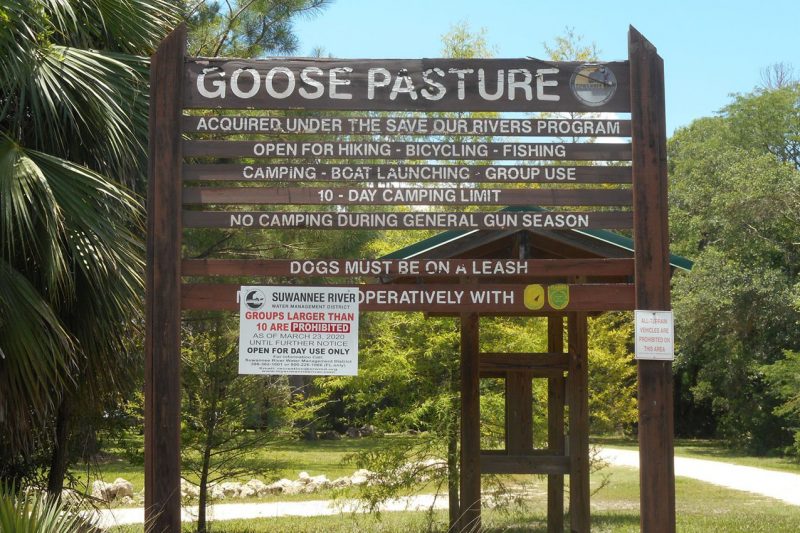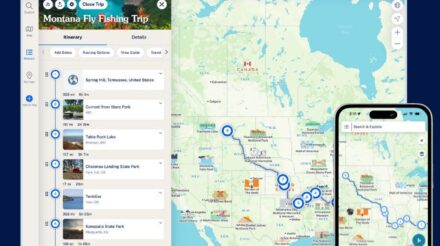Florida’s water management districts are designed to protect natural resources like water for residents in the state, and within those areas, visitors can find public land and recreation sites. The districts include St. Johns River, Suwanee River, Northwest, South, and Southwest Florida. While the state’s Department of Environmental Protection has the final say on rules and restrictions, each district has its own governing body, making understanding the ins-and-outs of this camping option a little tricky.
In some ways, camping in Florida’s water management districts is like camping on BLM land, but in other ways, they have many rules and restrictions, and it can quickly become confusing and even discouraging for some trying to set up camp. But don’t worry, we have you covered! Armed with the information below, you’ll see that there is plenty of land to enjoy. In fact, the majority of free camping in Florida can be found within these districts.
Northwest Florida Water Management District
Starting in the Panhandle, Northwest Florida Management District covers from the Alabama state line over to Jefferson County and includes cities like Panama City, Pensacola, and Tallahassee.
Camping in this area requires a free permit, which can be obtained from their website. The Northwest Florida Water Management District warns campers that while they will find public roads maintained in the area, seasonal roads are not maintained, and drivers are on their own.
One of the most popular spots among Campendium users is Florida River Island. The area is an actual island in the middle of a floodplain and is accessible by a bridge. It occasionally gets shut down during flooding or other high water events, so if you go, it’s a good idea to check on conditions beforehand.
Suwannee River Water Management District
Heading east, campers will end up in the Suwannee River Water Management District. This area is the smallest district and is one of the most rural areas of Florida. Part of the district covers Alachua County, home of Gainesville, FL, but the actual city falls into a separate district. However, visitors will find some uniqueness in the area with the highest concentration of freshwater springs in the state and North America.
Officials with the district say that camping follows similar rules to the Northwest District, and many (but not all) areas require permits. According to the district, “Drive-in camping by individuals is allowed at Goose Pasture in Jefferson County. Group camping in designated areas on District lands, and canoe and boat camping along the rivers on District lands, are allowed by special use authorization.” You can acquire a special use authorization for free by calling 386-362-1001 or emailing recreation@srwmd.org.
The district shared with us that many areas are more focused on maintaining water resources than other activities, and users should not expect to see a lot of daily maintenance. However, there are still 160,000 acres of land available and plenty of options.
St. Johns River Water Management District
The St. Johns River Water Management District covers Northeast and East Central Florida for a total of 18 counties. It includes major areas like Jacksonville and St. Augustine. With nearly 775,000 acres of land, officials say the majority is open to the public following proper conservation guidelines.
While there is plenty of camping available in this area, there are several rules users must follow. Only primitive camping is allowed, and many campsites are only accessible by hiking or even boating, with a ban on RVs and travel trailers. The majority of them have little or no amenities, so expect to be truly off the grid.
However, there are some exceptions, like Buck Lake, which can be driven to and includes a boat ramp for water access for anyone who wants to boat in the area.
Many campsites are first-come, first-serve, but there are a handful of reservations that can be made online up to 24 hours in advance.
Southwest Florida Water Management District
Arguably the most popular region for camping, and holding the most positive ratings on Campendium for Florida water management district camping, is the Southwest Florida Water Management District. This area on the state’s Gulf Coast is built around the Tampa area and covers a lot of the state’s west coast.
There’s a long list of popular spots in the district, but one of the most popular is Lake Panasoffkee. Unlike many other water management campsites, Lake Panasoffkee offers some amenities and RV camping. Campendium users say the free campground offers big open spaces and is a short drive from the highway.
Deep Creek Preserve is another popular location found a little off the beaten path. Those who have booked there stress the importance of a reservation, reporting that campers need to acquire an access code to get behind a gate.
When it comes to camping in the Southwest Florida District, you can expect a lot of options, including backcountry camping where you’ll need a boat or hike in, primitive camping that you can drive to, and even equestrian sites. Camping does require a reservation beforehand, and with the popularity of these sites, it’s a good idea to book early. Reservations are open three months in advance.
South Florida Water Management District
Finally, we’ve arrived at the South Florida Water Management District, which covers parts of the Atlantic and Gulf coastline. Here, campers will find access to places like Miami, Fort Myers and Naples, and of course, the Everglades.
Hickory Hammock Campground has a five-star rating from Campendium users, and most comment on how the campsites are remote but still have easy access. Again, when it’s free, it’s hard to beat! This campground sits in the middle of the state and is fairly popular for those with horses.
The South Florida Water Management District says special vehicle and other land use permits are required for a limited number of locations. Unlike most of the other districts, few places in this district require camping permits in advance. For a full list of sites and their regulations, head here.
While Florida isn’t known for its free camping, the state’s water management districts’ options offer opportunities for those willing to venture a bit off the beaten path. Now, enjoy that warm weather!




